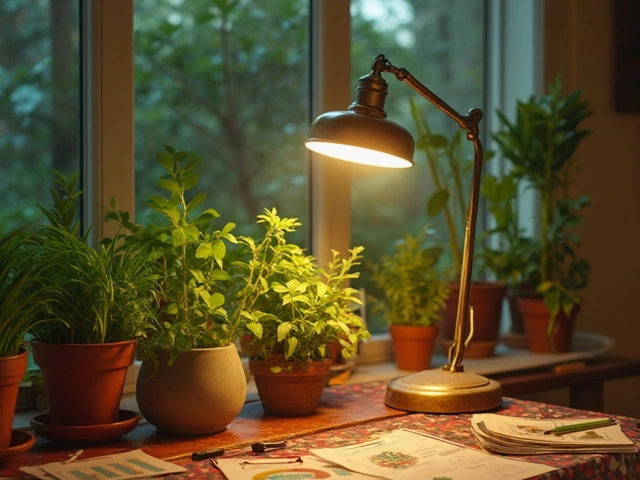Citronella: Grow It, Use It, Keep Bugs Away
Ever wish mosquitoes would just disappear from your backyard? Citronella might be the answer. This fast‑growing herb not only smells great but also sends most bugs packing. Below you’ll find straight‑forward steps to plant, care for, and harvest citronella, plus simple ways to turn it into a DIY repellent.
Planting Citronella in Your Garden
First thing’s first – pick the right spot. Citronella loves full sun, so aim for at least six hours of direct light daily. If you live in a very hot zone, a little afternoon shade helps keep the roots from scorching.
Soil should be well‑draining yet retain some moisture. A mix of garden loam, sand, and compost (about 2:1:1) works well. Before planting, loosen the soil to a depth of 8‑10 cm and mix in a handful of compost for nutrients.
Space the plants about 60 cm apart. This gives each stem room to spread and lets air flow, which reduces fungal problems. Plant the seedlings at the same depth they were in their pots, firm the soil around the base, and water thoroughly.
Watering is key during the first month. Keep the soil evenly moist but not soggy – think of a damp sponge. After the plants are established, you can cut back to a deep watering once a week, especially in dry spells.
If you’re in a cooler region, start seeds indoors 4‑6 weeks before the last frost. Transplant the seedlings once the danger of frost has passed and the nighttime temperature stays above 15 °C.
Everyday Uses of Citronella
When the leaves are about 30 cm tall, you can start harvesting. Snip the stems early in the morning when the oil content is highest. Strip the leaves from the stems and either use them fresh or dry them in a shaded, airy spot for later use.
Fresh leaves make a quick mosquito repellent. Crush a few leaves, rub them on your skin, and the scent will keep bugs at bay for a couple of hours. For a longer lasting spray, steep dried leaves in hot water, let the brew cool, then bottle it. Add a splash of neem oil for extra protection.
If you’re into DIY projects, turn the harvested leaves into citronellal oil. Place the crushed leaves in a glass jar, cover with a carrier oil (like coconut or almond), and let it sit for a week in sunlight. Strain the mixture and you have a low‑cost, natural spray for outdoor gatherings.
Citronella also works well as a companion plant. Plant it near tomatoes, peppers, or roses to help deter aphids and beetles. Just remember that coffee grounds can hurt citronella, so keep your compost recipes in check.
Finally, prune the plant regularly. Cutting back about a third of the foliage each growing season encourages fresh shoots, which produce more oil. Dispose of old cuttings in the compost – they’ll break down quickly and enrich the soil.
With these simple steps, you’ll have a thriving citronella patch that not only adds a pleasant citrus scent to your garden but also keeps unwanted pests far away. Give it a try and enjoy a bite‑free backyard this summer.
Number One Natural Insect Repellent: The Truth About What Really Works
Looking for a natural way to keep bugs off? This article uncovers the number one natural insect repellent and explains why it outshines the rest. Learn practical tips, fascinating facts, and how to use it for the best results. Say goodbye to harsh chemicals, and get ready to enjoy the outdoors without annoying bites. Even your backyard barbecues will get an upgrade.
About
Pest Control
Latest Posts


What Plant Only Blooms Every 100 Years? Exploring the Legendary Century Flowers
By Alden Thorne Apr 22, 2025

Natural Aromas That Repel Bugs: What Scents Keep Pests Away?
By Alden Thorne Jan 31, 2025

Does Hydrogen Peroxide Help Root Rot? The Real Story for Indoor Plants
By Alden Thorne May 2, 2025

